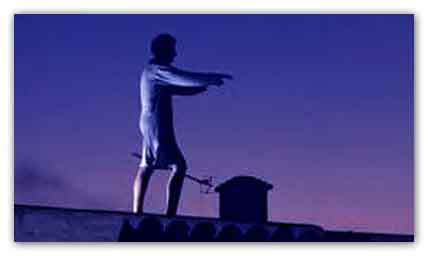|
According to new Stanford University School of Medicine research close to one in three people in the United States may sleepwalk during their lives, 3.6 percent of U.S. adults - or upward of 8.4 million - are prone to sleepwalking and 1 percent had two or more episodes in a month. The work also showed an association between nocturnal wanderings and certain psychiatric disorders, such as depression and
anxiety.

The study underscores the fact that sleepwalking is much more prevalent in adults than previously
appreciated.
Maurice Ohayon, MD, DSc, PhD, professor of psychiatry and behavioral sciences, is the lead author of the paper, which will appear in the May 15 issue of Neurology, the medical journal of the American Academy of
Neurology.
While wandering around at night can be harmless and is often played for laughs, sleepwalking can have serious consequences. Episodes can result in injuries to the wanderer or others and lead to impaired psychosocial
functioning.
It is thought that medication use and certain psychological and psychiatric conditions can trigger sleepwalking, but the exact causes are unknown. Also unclear to experts in the field is the
prevalence.
"Apart from a study we did 10 years ago in the European general population, where we reported a prevalence of 2 percent of sleepwalking," the researchers wrote in their paper, "there are nearly no data regarding the prevalence of nocturnal wanderings in the adult general population. In the United States, the only prevalence rate was published 30 years ago."
For this study, the first to use a large, representative sample of the U.S. general population to demonstrate the number of sleepwalkers, the researchers also aimed to evaluate the importance of medication use and mental disorders associated with sleepwalking. Ohayon and his colleagues secured a sample of 19,136 individuals from 15 states and then used phone surveys to gather information on participants' mental health, medical history and medication
use.
Participants were asked specific questions related to sleepwalking, including frequency of episodes during sleep, duration of the sleep disorder and any inappropriate or potentially dangerous behaviors during sleep.
Those who didn't report any episodes in the last year were asked if they had sleepwalked during their childhood. Participants were also queried about whether there was a family history of sleepwalking and whether they had other parasomnia symptoms, such as sleep terrors and violent behaviors during
sleep.
The study also showed that people with depression were 3.5 times more likely to sleepwalk than those without, and people with alcohol abuse/dependence or obsessive-compulsive disorder were also significantly more likely to have sleepwalking episodes.
In addition, individuals taking SSRI antidepressants were three times more likely to sleepwalk twice a month or more than those who
didn't.
"There is no doubt an association between nocturnal wanderings and certain conditions, but we don't know the direction of the causality," said Ohayon. "Are the medical conditions provoking sleepwalking, or is it vice versa? Or perhaps it's the treatment that is responsible."
The duration of sleepwalking was mostly chronic, with just over 80 percent of those who have sleepwalked reporting they've done so for more than five years.
Sleepwalking was not associated with gender and seemed to decrease with age.
Nearly one-third of individuals with nocturnal wandering had a family history of the disorder.
People using over-the-counter sleeping pills had a higher likelihood of reporting sleepwalking episodes at least two times per
month.
Source
Stanford University Medical Center
(MDN)
|
![]()